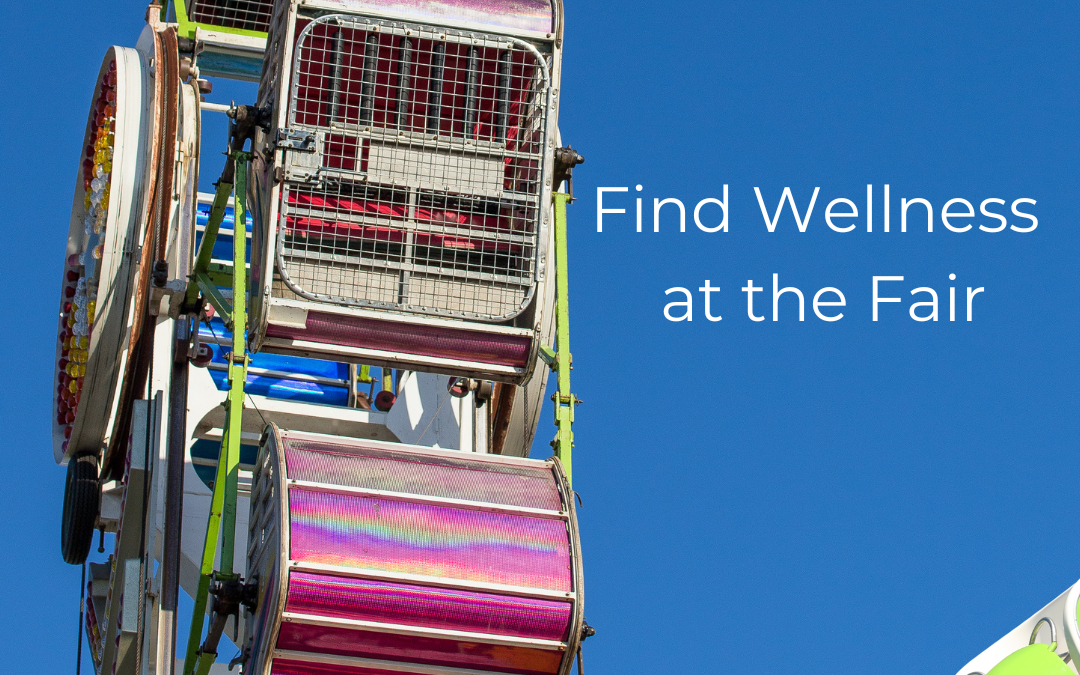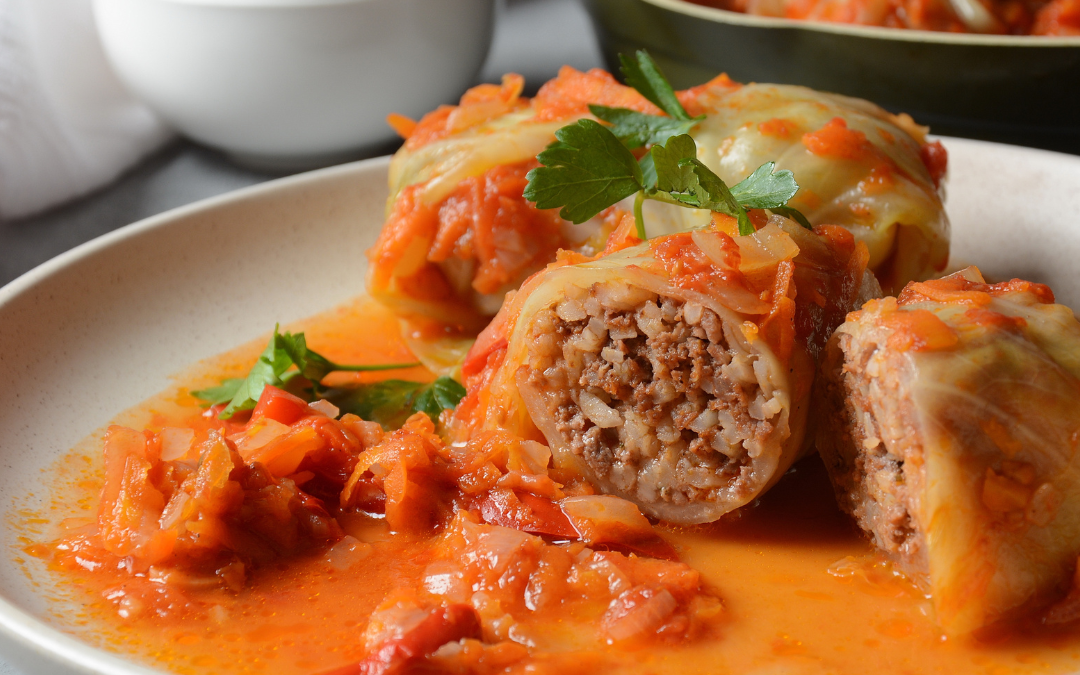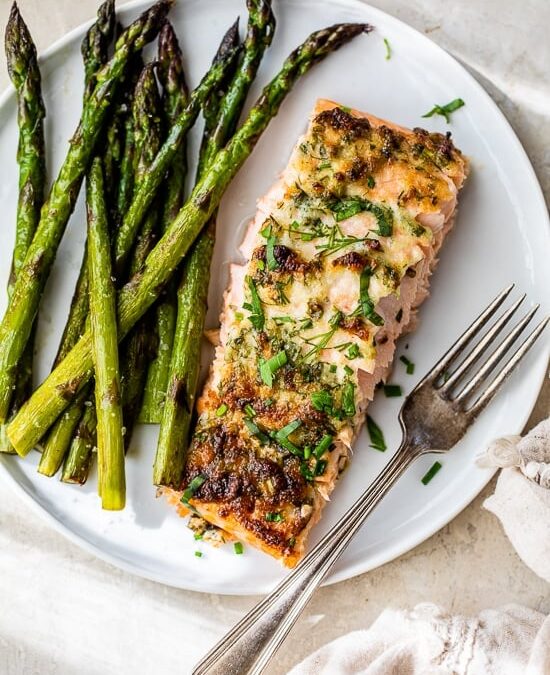
by Guest | Jan 28, 2025 | Featured, Uncategorized
Estrategias para disfrutar del invierno
Las estaciones del año nos traen cambios a nuestro medio ambiente. Estos cambios son necesarios para que la vida natural siga su curso. Las estaciones se presentan de modo diferentes de acuerdo a la ubicación geográfica del lugar. En el condado de Tillamook las estaciones nos permite disfrutar de la belleza de nuestros bosques verdes ya que las temperaturas son frías pero no en extremo. Aunque por otra parte hay que aceptar que algunas veces el clima del invierno nos afecta el estado de animo de una manera negativa.
Es por esto que he decidido hablar de cinco estrategias simples que podemos implementar cada día durante el invierno para disfrutar y evitar la melancolía de la estación. Estas son las cinco estrategias; actitud positiva, alimentación saludable, hidratación, socialización, y nuevas actividades.
Actitud positiva
Al concentrarse en pensamientos positivos y las cosas que nos traen alegría, esforzamos nuestra mente a cambiar de actitud. Es tan fácil enfocarse en las cosas que nos va mal. A todos nos pasan cosas que nos desaniman, alguien hablo mal de nosotros, nuestra pareja se enoja muy seguido, nuestros hijos no parecen escuchar lo que les decimos, y muchas circunstancias más de las que nos podemos quejar. Pero que tal si nos enfocamos en concentrarnos en las cosas que nos traen alegría, y las cosas que si tenemos control. Como por ejemplo nuestra actitud positiva, y la manera de percibir lo que pasa alrededor de nosotros.
Una forma en la que podemos crear sentimientos positivos es a través de la escritura. Podemos escribir porque estamos agradecidos hoy. Puede ser algo tan simple como “Estoy agradecido porque puedo ver la lluvia y no mojarme”. O “Estoy agradecido porque es un nuevo día”
No necesitas ser un escritor profesional para empezar un diario, tampoco necesitas estresarte en escribir correctamente, usar puntación correcta o palabras sofisticadas. Recuerda cuando haces esta actividad para ti mismo. Puedes usar cualquier libreta, e incluso puedes usar tu teléfono usando las aplicaciones disponibles. También el grupo de prevención de TFCC tiene diarios que te puede proporcionar totalmente gratis. Para tu diario personal gratis comunícate con Angelica Ortiz angelicao@tfcc.org.
Alimentación Saludable
Todos sabemos o hemos escuchado de la importancia de la alimentación saludable. Hay lugares locales donde te pueden brindar información de valor y respaldada medicamente para que implementes una dienta balanceada. Algunos de los lugares son tu centro de salud local y el siguiente sitio de internet de prevención contra la diabetes. Prevenir la diabetes tipo 2 | Diabetes | CDC.
Hidratación
También no debemos olvidarnos de la hidratación. Muchas veces con el frio olvidamos la importancia de tomar agua. Según la asociación de la clínica Mayo la recomendación de agua depende de la actividad física, el clima, y la salud de cada persona. Para más información lee el siguiente articulo. Agua: ¿cuánto tienes que beber todos los días? – Mayo Clinic
Algunos tips para incrementar el consumo de agua son usar botellas medidoras para medir la cantidad de agua , prepararla por la mañana y tomarla durante el día. También podemos añadir unas gotas de limón para darle sabor. No olvidemos que en estos tiempos de invierno con el frio viene bien disfrutar de las tes de sabores o de fruta fresca. Compartiré la receta del ponche tradicional al final.
Socialización
La socialización es una parte integral en la vida del ser humana. A través de la socialización es como aprendemos comportamientos, compartimos tradiciones, cultura y nos integramos en la sociedad. Aunque algunas veces necesitamos tiempo a solas, el estar completamente en soledad no es recomendable o bueno para la salud mental.
La organización HelpGuide.org nos habla de ocho maneras de lidiar con la soledad. Me siento
solo: 8 maneras fáciles de lidiar con la soledad
Actividades Nuevas Creo que todos nos hemos sentido atrapados en la monotonía de la rutina diaria en algún momento de nuestra vida. Especialmente en los meses cuando no tenemos muchas horas de luz del día. Claro está que no podemos cambiar el tiempo pero si podemos hacer algo diferente para cambiar la rutina. Hay muchas actividades que podemos hacer sin necesidad de comprometer nuestros bolsillos con altos costos. La mejor manera de hacer algo nuevo y divertido es planificando con anticipación. Algunas veces solo tenemos que ser creativos o hacer una pequeña investigación de eventos, clases o celebraciones gratis que hay en la comunidad. Lo mas importante es estar dispuesto a explorar nuevas actividades. Algunas de las actividades nuevas que he estado haciendo este invierno son buscar oro en los ríos, hacer videos para las redes sociales, propagar hortensias, y ser voluntaria en eventos comunitarios.
En resumen, la lista de cosas para disfrutar el invierno son:
Esfuérzate en ver las cosas positivas y en enfocarte en las cosas que te traen alegría. Alimenta tu cuerpo a través de una alimentación balanceada, e hidratación. Pasa tiempo con las personas que te hacen feliz, desarrolla nuevas amistades y prueba algo nuevo que te permita salir de tu zona de confort y a la vez te distraiga de la rutina diaria.
Evita el consumo de drogas o el juego para hacer frente al estrés o la soledad. Si siente que está teniendo problemas en estas áreas no dude en buscar ayuda.
Comuníquese con la agencia al 503-842-8201 para obtener más información sobre el tratamiento de problemas de prevención de drogas o adicción al juego de azar.
Llame a la línea de ayuda para problemas de adicción al juego de Oregón: 1-877- mylimit (1-877-695-4648)
Chatee con un asesor de adicción al juego en línea en www.opgr.org Aquí les dejo la Receta de ponche tradicional
Ingredientes
½ cana pelada y en cortada en trozos.
1 libra de Tejocote entero.
1 libra de Manzana picada en pedazos pequeños y sin la semilla.
1 libra de guayaba partida en dos.
1 pina pelada y picada en pedazos pequeños.
300 gramos de tamarindo sin cascara.
100 gramos de flor de Jamaica
3 trocitos de canela
1 taza de Azúcar morena o al gusto
Modo de preparación
En una olla se ponen cinco litros de agua, se añade la canela, la caña y el tejocote y se le prende a juego medio. Después de 20 minutos se le añaden el resto de los ingredientes. Se deja hervir por otros 40 minutos y estará listo para saborear.
Acerca de la autora “Angelica Ortiz”
La autora es graduada de la universidad de Eastern Oregón University con una licencieatura en estudios integrados en salud pública y negocios. Es inmigrante mexicana, reside en el condado de Tillamook y trabaja para Tillamook Family Counseling Center y Tillamook Bay Community College.
Strategies to enjoy winter
The seasons of the year bring changes to our environment. These changes are necessary for natural life to continue its course. The seasons present themselves differently according to the geographic location of the place. In Tillamook County the seasons allow us to enjoy the beauty of our green forests since the temperatures are cold but not extreme. Although on the other hand we must accept that sometimes the winter weather affects our mood in a negative way. That is why I have decided to talk about five simple strategies that we can implement every day during winter to enjoy and avoid the melancholy of the season.
These are the five strategies; positive attitude, healthy eating, hydration, socialization, and new
activities.
Positive attitude
By concentrating on positive thoughts and the things that bring us joy, we force our mind to change its attitude. It is so easy to focus on the things that are going wrong. We all have things happen that bring us down, someone speaks badly about us, our partner gets angry too often, our children don’t seem to listen to what we say to them, and many more circumstances that we can complain about. But what if we focus on concentrating on the things that bring us joy, and the things that we do have control over. Like for example our positive attitude, and the way we perceive what happens around us.
One way we can create positive feelings is through writing. We can write down why we are grateful today. It can be something as simple as “I am grateful that I can see the rain and not get wet.” Or “I am grateful that it is a new day.”
You don’t need to be a professional writer to start a journal, nor do you need to stress about writing correctly, using correct punctuation or fancy words. Remember when you do this activity for yourself. You can use any notebook, and you can even use your phone using the available apps. Also the TFCC prevention group has journals that they can provide you totally free. For your free personal journal, contact Angelica Ortiz angelicao@tfcc.org.
Healthy Eating
We all know or have heard of the importance of healthy eating. There are local places where
you can get valuable, medically supported information to help you implement a balanced diet.
Some of the places are your local health center and the following diabetes prevention website.
Preventing Type 2 Diabetes | Diabetes | CDC.
Hydration
We should also not forget about hydration. Many times in the cold we forget the importance of drinking water. According to the Mayo Clinic Association, the water recommendation depends on physical activity, the weather, and the health of each person. For more information, read the following article. Water: How much should you drink every day? – Mayo Clinic
Some tips to increase water consumption are to use measuring bottles to measure the amount of water, prepare it in the morning and drink it during the day. We can also add a few drops of lemon to give it flavor. Let’s not forget that in these cold winter times it is good to enjoy flavored teas or fresh fruit. I will share the recipe for traditional punch at the end.
Socialization
Socialization is an integral part of human life. Through socialization is how we learn behaviors, share traditions, culture and integrate into society. Although sometimes we need time alone, being completely alone is not advisable or good for mental health.
The HelpGuide.org organization tells us about eight ways to deal with loneliness. I feel lonely: 8 easy ways to deal with loneliness
New Activities
I think we have all felt trapped in the monotony of the daily routine at some point in our lives. Especially in the months when we do not have many hours of daylight. Of course we cannot change the time but we can do something different to change the routine. There are many activities that we can do without having to commit our pockets to high costs. The best way to do something new and fun is to plan ahead. Sometimes we just have to be creative or do a little research on free events, classes, or celebrations in the community. The most important thing is to be willing to explore new activities. Some of the new activities I’ve been doing this winter are looking for gold in rivers, making videos for social media, propagating hydrangeas, and volunteering at community events.
In summary, the list of things to enjoy in winter are:
Strive to see the positive and focus on the things that bring you joy. Fuel your body with a balanced diet and hydration. Spend time with people who make you happy, develop new friendships and try something new that allows you to get out of your comfort zone and distract you from the daily grind.
Avoid drug use or gambling to cope with stress or loneliness. If you feel you are having trouble in these areas do not hesitate to seek help.
Contact the agency at 503-842-8201 for more information on drug prevention or
gambling addiction treatment.
Call the Oregon Gambling Addiction Helpline: 1-877-mylimit (1-877-695-4648)
Chat with a gambling addiction counselor online at www.opgr.org
Here is the recipe for traditional punch
Ingredients
• ½ peeled and chopped sugarcane.
• 1 pound of whole Tejocote (you can find this fruit in Mexican stores).
• 1 pound of apple, chopped into small pieces and without the seed.
• 1 pound of guava, cut in half.
• 1 pineapple, peeled and chopped into small pieces.
• 300 grams of tamarind without shell.
• 100 grams of hibiscus flower
• 3 pieces of cinnamon
• 1 cup of brown sugar or to taste
Preparation method
In a pot, put five liters of water, add the cinnamon, sugarcane and tejocote and turn on medium heat. After 20 minutes, add the rest of the ingredients. Let it boil for another 40 minutes and it will be ready.
About the author “Angelica Ortiz”
The author is a graduate of Eastern Oregon University with a bachelor’s degree in integrated studies with two minors, community health and business administration. She is a Mexican immigrant, resides in Tillamook County, and works for Tillamook Family Counseling Center and Tillamook Bay Community College.

by Guest | Oct 28, 2024 | Being Well, Featured, Uncategorized
…to taking action for breast cancer prevention and healing.
October is breast cancer awareness month. It’s also my birthday month, and I’m happy to say, I’ve come a long way in my healing as I now feel honored to share my birthday month with this awareness as many of us would like to not have to touch it with a 10 foot pole. You see, I’ve learned much about breast cancer from lived experience, both my own diagnosis and one of my sisters. My sister’s story ended with her dying from metastatic breast cancer only 2 years from her original diagnosis. I’m currently 2.5 years out and doing great as I plan to continue to do.
Neither of us were paying enough attention to our risk factors and we had several. There were many factors involved including earlier cancers and radiation treatments, environmental toxin exposures (we all live in a chemical soup world, reducing our exposures and supporting our body’s pathways of elimination are key) emotional and physical overwhelm/high stress, over-nurturing others and under-nurturing the self. Sound familiar anyone? 1 in 8 are the current statistical numbers of breast cancer occurrence among women. Also, did you know? 1 in 100 men are affected. Each story is unique and there are certain things that put each of us in different risk categories.
Knowing our risk factors, how many we have and what we can do to lower our risk factors with lifestyle modification are all within our control. I knew I was in a higher risk category from having had radiation therapy in my early 20’s. I knew I functioned at a high stress level, saw signs of estrogen dominance, was persistently overweight for many years, chronically inflamed and worked nights often as a birth doula plus a few other factors. Yet I just hoped eating organically and not exposing myself to more radiation would keep me healthy. It wasn’t enough. Receiving the diagnosis of invasive ductal carcinoma right after my sister’s passing was a doozy of a hit too, but through my lifestyle adaptions it has ultimately brought me back to my earlier life goal of longevity (living to 100 or beyond!) and living that life in vibrant wellness. Good health has always been a passion of mine, but it’s funny how we can let stress and certain situations lead us to believe we should accept less for ourselves. Ultimately cancer has taught me how to live well again. Thank goodness! However, it was not easy to go through to get myself back on track. I don’t actually recommend it 😉 It is therefore, my pleasure and task to share with others what they can do to ideally avoid diagnosis by steering away from known risk factors and incorporating lifestyle habits that decrease risk factors. I love sharing preventive habits and skills in general for us all (including prevention of other diseases too I’d like to add).
Know your risk factors. How many of these align with you?
Risk factors from CDC
- Being a woman
- Age: most diagnosed after 50
- Having BRCA1&2 genes (genetics can be dimmed or brightened with lifestyle)
- Reproductive history – beginning menstruation before age 12 and menopause after 50 – also – First baby after 30, no breast feeding, no full term pregnancy
- Having dense breast tissue/connective tissue (hard to read in mammograms and needs better lymph movement and movement in general) Ultrasound and thermography** are better at reading dense breast tissue **note that thermography isn’t currently utilized by conventional medicine.
- Having a personal history of breast cancer
- Other breast diseases such as atypical ductal hyperplasia, lobular carcinoma in situ
- Family history of breast or ovarian cancer (with or without BRCA gene) first degree relative; mom, sister, daughter – mother or father side
- Previous treatment with radiation (such as Hodgkins lymphoma also a sign the lymph system needs support)
- Exposure to DES drug – diethylstilbestrol – 1940-1971 – miscarriage prevention (mom and baby at higher risk)
- Not physically active
- Overweight or obesity after menopause
- HRT – hormone replacement therapy and slight increased risk seen from birth control pills.
- Drinking alcohol – risk increases with the more a woman drinks
- Smoking
- Night shift work
I would also add: environmental and food chemical additives that can overload our lymph and endocrine system as well as harm our gut microbiome.
Now to the empowering stuff!
What we can do: Taking action is key!
Eat more whole food plants! Eat more colors, eat seasonally, locally and clean/organic whenever possible. Check out the EWG’s list of clean 15 and dirty dozen to know what produce is ok to buy conventional/clean15 and which are ideal to buy organic/dirty dozen) Visit a local farm and enjoy their produce. They need our business through the cooler seasons too. Add one more vegetable to every meal and one new color a week. Ask about the farm’s growing habits. Find farms that don’t use chemicals. Many practice organic methods but don’t carry the certification yet and they’re happy to answer your inquiries.
Exercise! Move your body in ways that make you happy and feel good. Get moving every day. And this doesn’t mean stressed out running around, no, that’s counter productive. This means, enjoy a walk, hike or bike ride. Prioritize the time to commit to regular movement. You are so worth it! Walk one day, take a movement class another day such as Yoga or Joy Lymph Flow (a class I lead in Rockaway Beach and Nehalem) Tai Chi, Qigong or whatever you fancy, but it should bring ease to your body and time for repose. Turn on the music and dance! A fabulous way to heal many layers and promotes connection and health within the family if you live with others.
Quit smoking and don’t drink alcohol or limit your intake. Mocktails made with herbs are power packed with more phytonutrients that help us stay well and are an actual treat vs. a known risk factor.
Switch to natural household and personal care products. Don’t use anything with “fragrance” listed as an ingredient or chemical names you can’t pronounce or artificial colors. There are so many products out there, it can be overwhelming. Environmental Working Group also has a Skin Deep database listing products that are free from chemicals. It’s not one product that becomes the problem, it’s the many products together, it becomes a toxic load the body can’t handle. Switching to natural cleaners and personal care items actually uplifts our health instead.
Discuss your risk factors with your ND or MD and meet with a health coach like myself for support in making changes to your lifestyle at a pace that works for you to live a life that’s shown to be more preventive in lowering your risk factors and ideally avoiding this disease. I also teach breast massage for self-care and home screening. 3 This article is dedicated to those we’ve loved and let go of too early due to this disease and to those facing it now and in the future. May we all be free, live in flow, know ease and enjoy self care first so we may indeed be well and remain here for others.
Written by Elizabeth Golden Seaver, Health and Wellness Coach, Nehalem, OR and Tillamook County Wellness Coalition Member.
You can reach out to her at: goldenkeywellness.abmp.com, wingforwisdom@gmail.com
Other wellness questions? Email us at info@tillamookcountywellness.org. For more local health and wellness information, visit www.tillamookcountywellness.org or follow Tillamook County Wellness on Facebook and Instagram.

by Michelle | Aug 10, 2024 | Being Well, Featured, Move Well, Uncategorized
August is a busy month! There are several free wellness activities coming up, some of which you can learn more about at the Tillamook County Fair.
“Treasure Your Wellness” Treasure Map: This interactive map can be found at the Tillamook Library bookmobile located near the Master Gardener’s garden by the east entrance of the fairgrounds. This fun, free, and family-friendly adventure runs From August 5th to September 30th . Explore wellness destinations like Activity Island, Be Well-Nourished Bay, Community Cove and the Isle of Inner Peace. Each location includes activity challenges —volunteer, cook a healthy meal, visit a rec center, start a savings account and more. Complete at least one activity on each island and you could win incredible wellness-themed prizes, like cornhole, pickleball, and disc golf sets or the grand prize of an ATX bike valued over $500! In addition to being available at the fair, maps can be found at local library branches, Kiawanda Community Center, Tillamook YMCA, North County Recreation District and Food Roots or on- line at This Way to Well-Being | Tillamook County Wellness.
Health Literacy Campaign: Materials from our recent health literacy campaign can also be found at the Tillamook Library booth at the fair. Bookmarks and other materials highlighting important health information like finding a primary care provider, getting vital health screenings and knowing when to visit your doctor, urgent care or emergency department, are just a few topics covered. You can also find more information here. Community Health Survey: When you visit the Library Bookmobile at the Fair, be sure to take our Community Health Needs Survey. Tell us what you and your family most need to live your best life and your areas of greatest concern impacting your health and well-being. You can also take the survey here.
Financial Wellness: Visit the Habitat for Humanity booth – located in the main pavilion building, under the stairs near the fair office – for community conversations on what financial health means to you. While you are there, learn more about first-time home buying and other ways you can work toward your financial goals. While you are at the Habitat for Humanity booth be sure to sign up for:
- FUNancial Wellness Event – Come to the Tillamook YMCA, Monday, August 19th, 2024, 5:00- 6:30 PM for food, fun and financial learning opportunities for kids 3rd -6th grade. This FREE event provides kids and families an opportunity to learn about saving, spending, growing and protecting money. Kids will take home more than just knowledge with free giveaways and prizes. Learn more and register for the event here.
- Sign Up to become a “FinLit” Financial Literacy Volunteer – This program relies on volunteers to deliver free curriculum from Financial Beginnings. Classes are held in English & Spanish at multiple community locations, including Tillamook Bay Community College, Helping Hands, and Trask High School.
Volunteers can commit to as many or as few classes as works for their schedule. To learn more or to register to become a volunteer, visit Financial Beginnings (finbeg.org). If we don’t see you at the fair, here are other ways you can get information about these and future wellness events.
AUTHOR: Michelle Jenck, Adventist Health Tillamook Director of Community Well-Being





